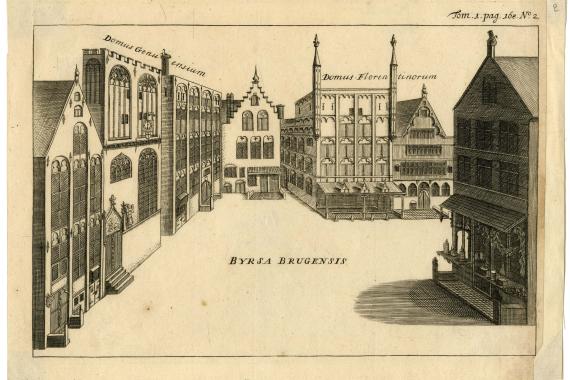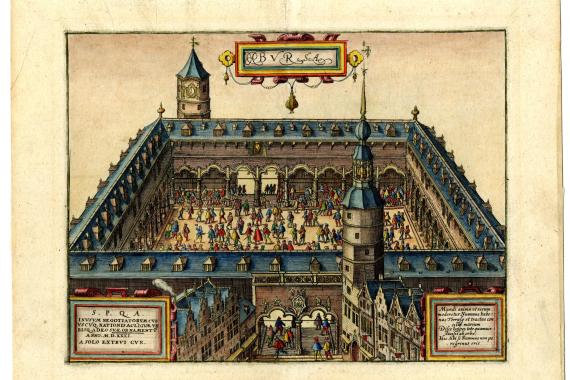Nevertheless, the name of the old Bruges innkeeping family lives on in the modern-day words for “stock exchange” in a number of languages, including French (bourse) and Dutch (beurs). The name and coat of arms of the Van der Buerse family, which featured three purses or “beurzen” in Flemish, were undoubtedly decisive in creating an association between the Beursplein in Bruges and the concept of a stock market. Yet the term originally referred to the square rather than the inn located there. The first writer to mention the Beursplein was Hieronymus Muenze, a German physician from Nuremberg who travelled extensively throughout Europe in 1495. His travel journals show that, in that year, he stayed at a guesthouse on the square in front of Ter Buerse. In one entry, he writes that, “[T]here is a square in Bruges where merchants assemble; it is called De Beurs. There, Spaniards, Italians, English, Germans, Orientals, in short, all nations gather.” When Bruges declined in importance the following century, financial activity shifted to Antwerp. People there soon spoke about “the new beurs”, with reference to the square in which merchants gathered. From Antwerp, the word beurs made its way to France, Italy, Spain, and Germany, where it became bourse, borsa, bolsa and Börse. The word “Burse” was also used in England between 1550 and 1775, until it was supplanted by the term “Royal Exchange”.



